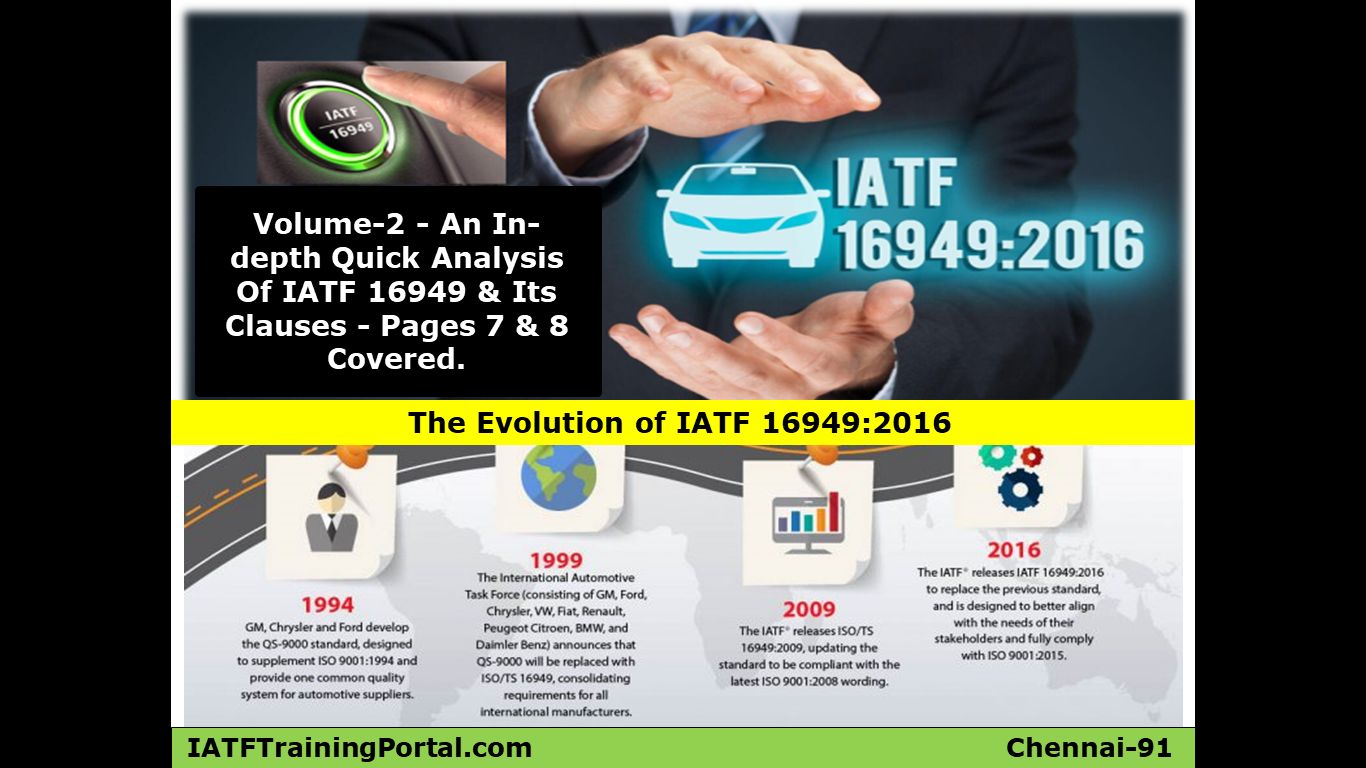
1) Foreword - Automotive QMS Standard
Foreword explains that this is not a stand-alone standard & some more requirements which are not covered in this standard forms part of the requirements. Some more requirements listed are,
1) Customer specific requirements
2) ISO 9001: 2015
3) ISO 9000: 2015
Annex-B in this standard has listed various “Customer specific requirement” manuals or instructions under topics as mentioned below,
1) Internal Audit
2) Non conformity & corrective action
3) MSA
4) Product approval (egs: PPAP)
5) Product design (egs: APQP)
6) Production control (egs: MMOG)
7) Quality management system administration
8) Risk analysis
9) Software process assessment (egs: CMMI, SPICE)
10) Statistical tools (egs: SPC)
11) Supplier quality management
12) Health & safety (egs: ISO 45001, OHAS)
Requirements listed in the “Annex-B” becomes a part of the requirements of this standard (even when it is stated as Annex-B is for guidance only), any deviation or alternate methods deviating from these requirements needs customer consent.
2) History
History of the IATF 16949 is explained here. ISO/TS16949 is first released in 1999 to bring a common certification helping to supply to all automotive OEMs across the globe instead of going for separate qualification / certification requirements as suggested by various automotive OEMs. Prior to this it was QS9000 certification which is mandatory if an automotive supplier wants to supply to USA automotive OEMs. QS9000 was jointly developed by the three automotive giants of USA’s Ford, Chrysler & General Motors. Like this every country had their own QMS requirements, especially the European countries. Any automotive supplier from any other region, especially from Asia, need to undergo multiple certifications / assessments if they want to supply to USA / European countries. ISO/TS16949:1999 broken this burden of multiple certification. ISO/TS16949 had undergone revisions during 2002 (2nd edition) & 2009 (3rd edition). This latest IATF16949:2016 1st edition was derived based on the feedback from certification bodies, auditors, suppliers & OEMs. ISO/TS16949:2009 3rd edition is cancelled now. IATF16949:2016 continues its alignment with ISO9001.
3) Goal
Goals (Aim or Objective or Vision) of the IATF16949 standard are,
1) Continual improvement (not continuous improvement, both are totally different terms with different intentions)
2) Defect prevention (prevention is defect did not happen even once, can happen only in new products)
3) Reduction of variation & waste (Variation = Six Sigma, Waste = Lean Manufacturing)
4) Remarks for certification
There is another manual titled “Rules for achieving and maintaining IATF recognition”. External & Internal auditors for IATF 16949 must read & understand this manual thoroughly. This manual covers criteria for Certification Body recognition, audit process and auditor qualification. This manual is intended for IATF recognised Certification Bodies auditing to the IATF 16949 3rd Party Audit Process.
More details regarding certification can be obtained from ANFIA Italy, IAOB, IATF France, SMMT UK, and VDA QMC Germany. To know more about IATF one can visit www.iatfglobaloversight.org
Keep following our website for more volumes on this topic “An in-depth quick analysis of IATF 16949 & its clauses”.
Thanks for spending your valuable time here. Keep in touch, keep following & keep supporting us.
Thanks & Regards,
Devarajan NR,
Chairman – JBEGlobal.com Job Portal & IATFTrainingPortal.com (Since 2013) Past – Delphi TVS | Rane | Brakes India |
Iris Mfg. (Shriram Group) | Hinduja Foundries | IRS (IRQS) | 9362439124 | devarajan.jupiter@gmail.com














